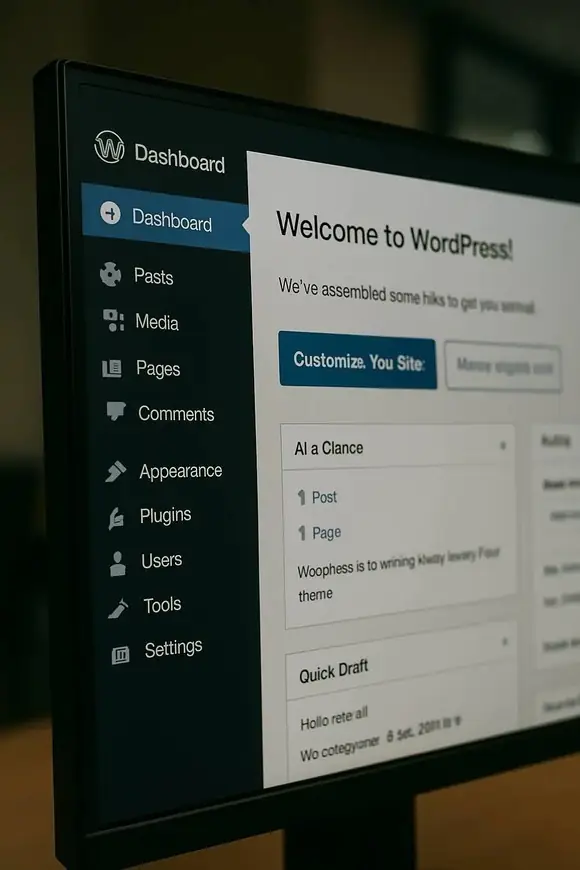When a business launches a new digital project—a website, an online store, a booking system—it’s common to think that building everything from the ground up is the best approach. And in some cases, that’s true. But not always.
Platforms like WordPress offer a solid alternative, especially in early stages, for projects with limited scope or for teams still exploring their business model. Choosing a pre-built platform isn’t about taking the “easy route”—it’s about understanding when customization is worth the investment… and when it’s not.
One of the biggest advantages of working with a platform like WordPress is the ability to go live quickly. That can be critical when the goal is to validate an idea, present a brand, communicate an offering, or start operating with just what’s needed.
In those situations, the real value is being able to move without friction, focus on strategy or content, and avoid investing time and budget in development that may not yet be necessary. If the business grows or the project becomes more complex, there’s always room to migrate to something custom later on.
In fact, we often recommend this approach when clients aren’t yet fully clear on what they need—or on how their processes will actually work once the project is live. For example, an online store doesn’t just need product pages and payment methods; it also involves shipping logistics, taxes, post-sale communication, tracking, and more. These platforms, by offering a predefined structure, help organize the business early on, force key operational decisions, and bring clarity to what the project actually requires.
That process also helps clients identify what’s truly unique about their operations, so they’re better equipped to scale into a custom solution when the time is right. Many successful custom systems today started as a well-executed WordPress.
As of January 2024, WordPress powers 43.2% of all websites on the internet, making it by far the most widely used content management system in the world.


Deciding not to build something from scratch—at least in the beginning—shouldn’t be seen as a limitation. In many cases, it’s a sign of technical maturity and strategic focus. It’s not about lowering the bar—it’s about adapting to the context.
Each project has its own rhythm. Choosing the right foundation for the current stage, team, and business reality can make all the difference.
At neo301, we don’t push for custom development by default. If we believe a platform like WordPress fits the project’s current needs, we’ll recommend it—and help implement it properly. That includes configuration, customization, performance, security, and scalability within the platform’s limits. When the business model is clearer, or the platform’s limitations become blockers, then we explore custom solutions. But not before. Because writing code is not the goal—the goal is building something that works, makes sense, and matches where the project is today.
Until then, choosing wisely is part of building well.
Technology professional with over 25 years of experience in software development and technical team leadership for clients across the Americas, Europe, and Asia. Founded multiple tech ventures and led high-impact digital projects for leading brands in both corporate and startup environments. Specialized in system architecture, project management, and scalable digital solutions. Combines strategic vision, user experience focus, and technical execution to turn complex ideas into robust, sustainable products.
